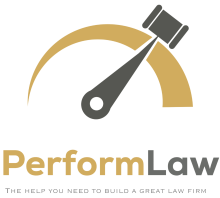Determining base salary adjustments requires careful consideration of progressive economic and qualitative performance expectations relative to actual performance. To ensure a fair and transparent process, consider the following:
Evaluators should consider economic performance indicators such as production, profitability, and supervision (maximizing production of others). Additionally, they should consider qualitative performance factors such as skills, work ethic, business development, administrative contributions, and mentorship.
In the early phases of an attorney's career, emphasize qualitative contributions when making base salary decisions. Cultivating well-rounded professionals who excel in their legal skills and have a broader impact on the firm is essential.
As attorneys progress and master their legal skills, the significance of economic performance increases. We augment expertise with greater weight on monetary contributions. Creating valuable skills should result in financial rewards for the firm and the lawyer.
The ultimate goal is to foster an environment that rewards high engagement and excellence. By aligning base salaries and increases with evolving expectations, we encourage attorneys to realize their full potential qualitatively and economically.
By aligning base salaries and increases with evolving expectations, we encourage attorneys to realize their full potential qualitatively and economically.
1. Raise Structure:
Generally speaking, the two types of raise structures are lockstep and balanced. Law firms sometimes default to lockstep systems for determining base salaries, especially for lawyers in the first 5-7 years of practice. Using a “pass-fail” approach to determine base salary increases, a lockstep approach gives salary increases commensurate with rank to those lawyers who have done enough to progress. Poorly performing lawyers do not advance. This approach fails to consider lawyers who may not warrant a maximum salary increase but have done enough to earn something.
Since the class year is the primary salary determination, lockstep approaches tend to have poor evaluation systems. It is easy to see why top performers feel frustrated and unmotivated under this approach. To mitigate some of the negative aspects of this approach, firms may use lockstep to recognize differences in learning curves. In this instance, the idea is that it is more important that a lawyer is progressing and their absolute place compared to their peers is less critical. Eventually, everyone catches up, or they must leave.
A better approach is to set salary ranges for each year with a balanced approach and determine raises based on progressive expectations for economic performance and qualitative contributions, as explained in the previous sections. To evaluate the raises systematically, consider the following process:
First, determine performance bands for the economic and qualitative factors (e.g., if the billable hour target is 1600, consider three bands: 1500-1599, 1600-1699, and 1700 plus). Each band should receive a score (e.g., three bands - 1,2,3). Then consider weighing the contributions by experience level, for example:
- Years 1-3 - Economic/ Qualitative 33/67
- Years 4-6 - Economic/ Qualitative 50/50
- Years 7-10 - Economic/ Qualitative 67/33
Each attorney receives a score based on where their performance falls in each performance component. See below an evaluation table example:
| ECONOMIC FACTORS | |||
| FACTOR | Minimum (1) | At Target (2) | Above Target (3) |
| Productivity (Billable Hours/ Cases Contributed) | |||
| Realization (Billings & Collections) | |||
| Profit threshold | |||
| Billing management | |||
| Origination | |||
| Composite Score | |||
| QUALITATIVE FACTORS | |||
|---|---|---|---|
| FACTOR | Minimum (1) | At Target (2) | Above Target (3) |
| Work Ethic | |||
| Work Quality | |||
| Bar, Professional, and Civic | |||
| Marketing Contributions | |||
| Skill Development | |||
| Training and supervision | |||
| Recruiting contributions | |||
| Client relations and service | |||
| Pro Bono | |||
| Composite Score | |||
2. Raise Amount:
Determine the actual raise by applying the attorney’s raise score to the salary range for the upcoming year (the higher the score, the closer the raise to the upper salary range limit). Consider here the following aspects:
- Cover at least the average inflation rate (BLS CPI) - additional merit raises based on performance scores
- Calculate future capacity (how much do you expect the attorney to produce next year?)
- Allocate raises (according to evaluation factors and market pay rate)
- Project payroll increases for the upcoming year
The raise process reduces turnover and ensures that best-fit lawyers thrive. However, to keep this process efficient and incentivize the right behaviors, we encourage firms to develop a systematized approach like the one we introduced here. Firms should work towards publishing expectations and salary ranges to their employees while applying the evaluation system during their raise discussions. Remember that the keys to an effective system include transparency in performance targets and earnings and a consistent process.




 />i
/>i
